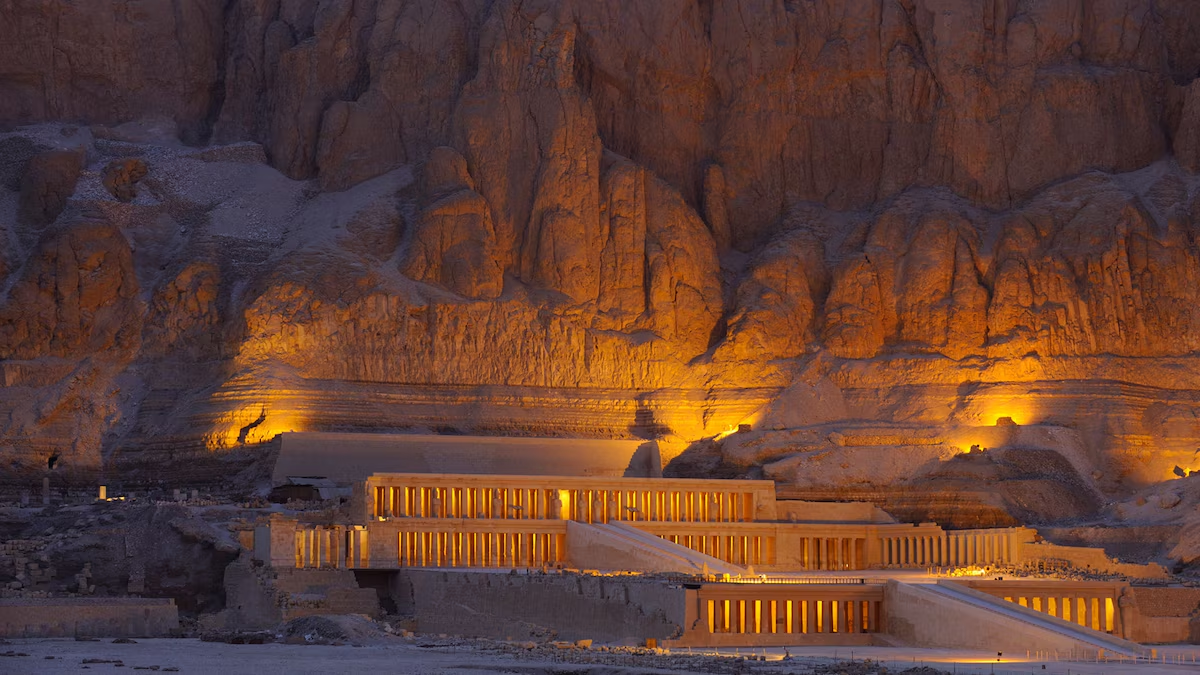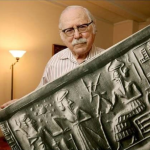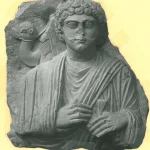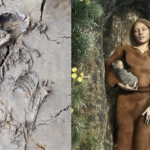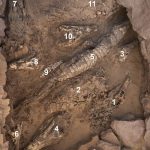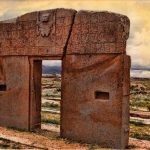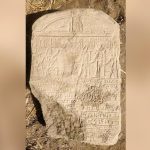Ancient Roman Horse Armor: Object from the Third Century CE Discovered in Dura-Europos, Syria, and Currently on Display in the National Museum of Damascus
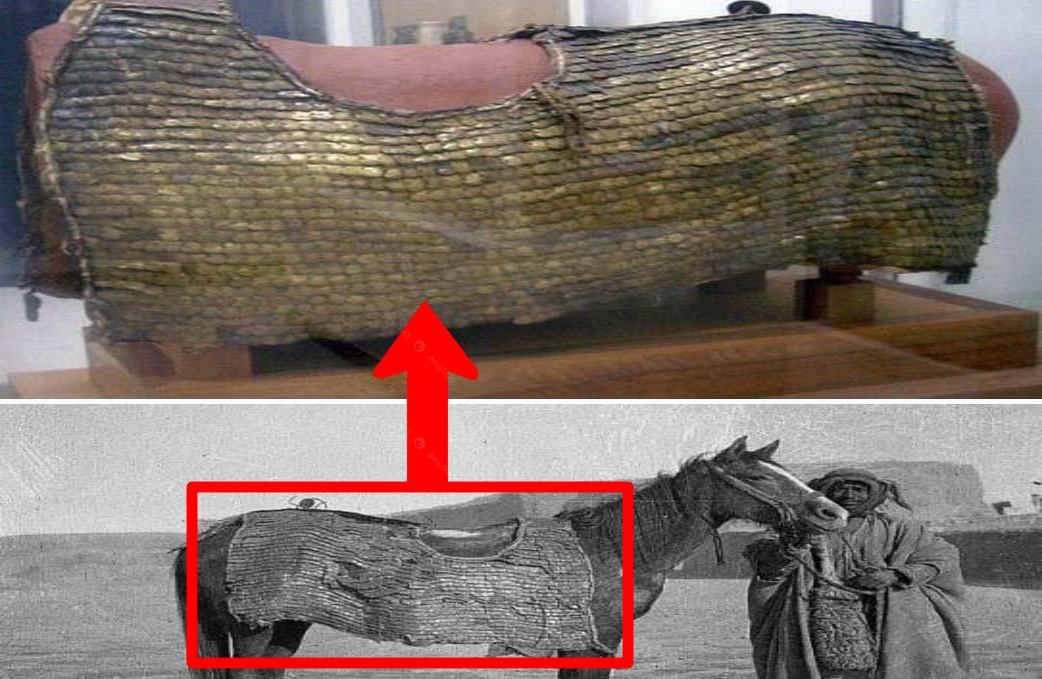
In the annals of archaeological discoveries, few artifacts captivate the imagination quite like the Roman horse armor unearthed in Dura-Europos, Syria. Dating back to the 3rd century CE, this remarkable piece of equestrian equipment is composed of approximately 2000 bronze scales, meticulously crafted to provide protection and adornment for a noble steed. Discovered in 1932 amidst the ancient ruins of Dura-Europos, this exquisite artifact now finds its home in the hallowed halls of the National Museum of Damascus, where it continues to mesmerize visitors with its beauty and historical significance.
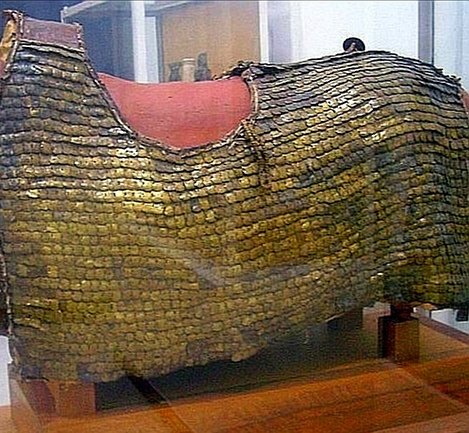
The discovery of the Roman horse armor in Dura-Europos was a momentous occasion, shedding light on the military and equestrian culture of the ancient world. Dura-Europos, situated on the banks of the Euphrates River, was a bustling frontier city, strategically located at the crossroads of trade routes and military campaigns. It was within the walls of this ancient city that archaeologists unearthed the remains of a Roman military outpost, including barracks, temples, and defensive structures. Among the treasures discovered within these walls was the impeccably preserved horse armor, a testament to the opulence and sophistication of Roman military equipment.
The craftsmanship of the Roman horse armor is truly exceptional, reflecting the skill and artistry of ancient metalworkers. Each bronze scale is intricately detailed, featuring patterns and motifs that speak to the aesthetic sensibilities of the Roman Empire. The armor was designed not only to provide protection for the horse but also to showcase the wealth and status of its owner. As a symbol of military might and aristocratic privilege, the horse armor would have been worn proudly on the battlefield, signaling the power and prestige of its rider.
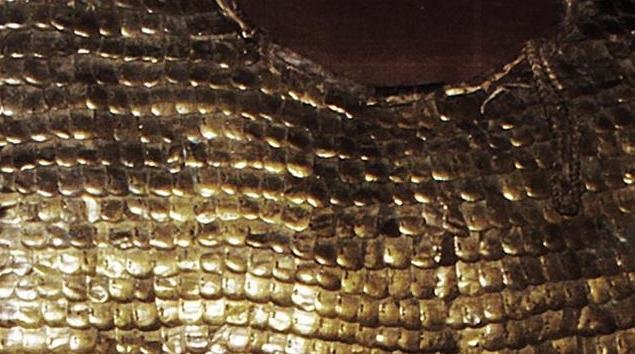
The significance of the Roman horse armor extends beyond its aesthetic appeal. It offers valuable insights into the role of cavalry in ancient warfare and the importance of horses in Roman military strategy. Cavalry units played a crucial role in the expansion and defense of the Roman Empire, providing mobility, shock power, and reconnaissance capabilities on the battlefield. The discovery of such a well-preserved piece of horse armor highlights the investment and resources dedicated to maintaining a formidable cavalry force, even in distant frontier regions like Dura-Europos.
The journey of the Roman horse armor from its discovery in 1932 to its current home in the National Museum of Damascus is a testament to the efforts of archaeologists, historians, and preservationists. Following its excavation, the armor underwent meticulous restoration and conservation to ensure its long-term preservation. Today, it stands as a centerpiece of the museum’s collection, where it serves as a tangible link to Syria’s rich archaeological heritage and the cultural legacy of the Roman Empire.

The bottom picture of the armor, taken shortly after its discovery in 1932, offers a glimpse into the excitement and anticipation surrounding the unearthing of such a significant artifact. In the black-and-white photograph, archaeologists and workers can be seen carefully excavating the armor from the sands of Dura-Europos, their faces alive with the thrill of discovery. This image serves as a poignant reminder of the human endeavor behind archaeological research and the dedication required to uncover and preserve the treasures of the past.
In conclusion, the Roman horse armor of Dura-Europos stands as a testament to the splendor and ingenuity of the ancient world. Its discovery offers a rare glimpse into the military and equestrian culture of the Roman Empire, while its exquisite craftsmanship continues to inspire awe and admiration. As it takes its place among the treasures of the National Museum of Damascus, the Roman horse armor serves as a tangible reminder of Syria’s rich history and cultural heritage, inviting visitors to marvel at the achievements of civilizations long past.
